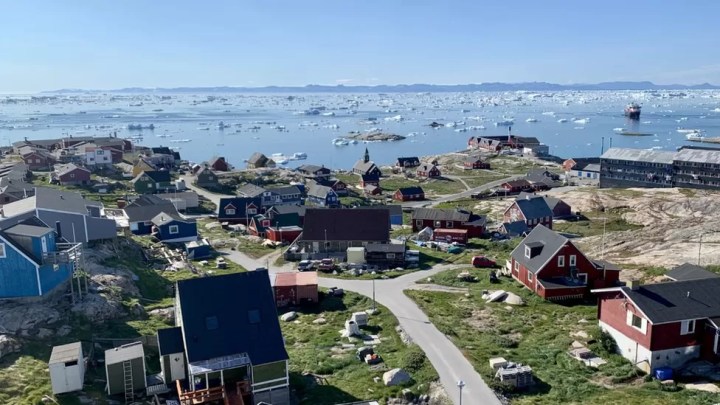
In Ilulissat, Greenland, fast climate changes are altering a way of life — for better and worse
In Ilulissat, Greenland, fast climate changes are altering a way of life — for better and worse

As Kaleeraq Mathaeussen heads out into Disko Bay on his boat to haul in the day’s halibut catch, towering white and blue icebergs the size of city blocks loom through the mist. He’s been fishing in these waters for decades. “Each season is not how it used to be,” he told me as we rode out into the bay. “Over the years, I’ve especially noticed that icebergs have been getting smaller and weaker.”

He used to fish with his sled dogs in winter, traveling out over the ice. But now that’s too dangerous, he said, because the sea no longer freezes like it used to.
Here in the town of Ilulissat, there’s a constant soundtrack of sled dogs howling and barking — but that’s changing too. Two decades ago, there were 5,000 sled dogs in this town; now, there’s only 1,800. Flemming and Ana Sofie Laurizten, who run dog sledding tours for tourists in the winter months, worry about this decline in numbers.
“I’m not happy to see the dogs disappearing from our culture,” Ana Sofie admitted. “I want to preserve the culture that my father had.”

Pointing to a map on the wall, her husband, Flemming, showed me how much the nearby Sermeq Kujalleq, or Jakobshavn Glacier, has retreated.
“The season is getting shorter and shorter, we can feel that,” he said. “You can see that big piece of the glacier missing there. All this ice is missing now.”
Each year hundreds of thousands of cubic feet of ice is calved from the glacier’s mouth about 30 miles away. And as more ice melts, it’s flowing faster, and sending more icebergs into the bay.
Skillfully weaving around these floating giants is George Jonathansen, a skipper on a tour boat. Even young people like him have witnessed change within their lifetimes.
“Nowadays, we never know how winter is going to be,” he told me. “I think this year has been unusual compared to the others, and a lot of places in Greenland have records in rain.”
However, in many ways, Arctic life has become easier. For now, retreating sea ice has brought new opportunities. In the harbor, even bigger catches are being unloaded. It’s now possible to fish year-round by boat, and Ilulissat is booming.

“We are thinking about the climate changes. We can feel it every day, we can see it every day,” said Palle Jeremiassen, the mayor of the local Avannaata district.
“There are some negative things about the changes, but there are also some positive things. Our fishermen take our boats and fish all the winter. But up in the north, they used to take some long hunting tours, but they can’t do it anymore. They have to change their way of living.”
Research by the universities of Greenland and Copenhagen carried out before the COVID-19 pandemic found that three-quarters of Greenlanders felt that climate change had already impacted their lives. And just recently, a group of climate scientists warned that major sea level rise is inevitable.
“At the moment, it’s a system that’s in deficit,” explained Alun Hubbard, a glaciologist and climate scientist at the Arctic University of Norway. “The amount of snow falling in it can’t keep up with the melt and the iceberg calving. What I’ve come to understand in the last 10 years is that there are really really abrupt changes going on.”
Today, Greenland’s melting ice may be having a big impact close to home, but it’s only adding a fraction of an inch to global sea levels. However scientists say these losses are taking place faster than expected, and they’ll have serious consequences for coastal communities far away from here.
There’s a lot happening in the world. Through it all, Marketplace is here for you.
You rely on Marketplace to break down the world’s events and tell you how it affects you in a fact-based, approachable way. We rely on your financial support to keep making that possible.
Your donation today powers the independent journalism that you rely on. For just $5/month, you can help sustain Marketplace so we can keep reporting on the things that matter to you.


















